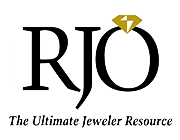Travelling around the country working with independent jewelers is not only a very rewarding experience, but it is a great way to see the diversity ideas, efforts and misconceptions that owners have. Walking into a new client’s store for the first time, I frequently am reminded of the words of Forrest Gump, “You never know what you are going to get.”
Although the precise conditions differ in every store, many circumstances are predictably similar. A brief review of some of the most blatant or impactful judgment errors might be helpful in reducing the mistakes that inhibit the growth of independent retail jewellery stores. Maybe you’ll see one or more that is affecting your own store.
One common misconception that jewellers have is a lack of understanding of the power of effective visual merchandising. Like any talent, people that do not understand the intricacies cannot develop an appreciation for the end result. Storeowners that would never hire a bench jeweller that lacked ample training will allow “Betty Lou” to arrange the store displays when she has no training in the subject. If that bench jeweller sets a diamond incorrectly, at some point, the stone may fall out, and the customer will return to the store looking for restitution. If “Betty Lou” creates a case that is confusing or difficult for the customer to shop, the sale is simply lost. Her mistake is silent but far more damaging long term because where the lost diamond is a single event, lousy displays affect store sales every hour and every day the store is open. Good display people are not inherently born with that ability, they are trained. Being able to make a case look “pretty” is not the same as making the case sell more jewellery.
Some years back, I wrote a book entitled “The Complete Guide to Effective Jewellery Display.” Once it went on sale, I was surprised to see the number of copies that were ordered from foreign countries. A disproportionate number of the copies were sent to readers in India, South Africa, Europe and Asia. I found myself wondering if perhaps those retailers saw their own lack of understanding of effective display techniques and valued additional education on the subject.
Storeowners that invest in simple training for their visual merchandising people will convert more lookers into buyers.
Another common misconception I see at stores stems from a lack of respect for their display elements. The owner will change his shirt if he spills a bit of coffee on the front, but he will leave a platform in his Bridal case that has stains on it for years. He’ll think nothing of using display elements of several different colors in a case because he doesn’t think it matters. Give him a free shirt (in a strange color, with a big logo on the front, and that might not fit well) and he might or might not wear it. Give him a free display with the same attributes and they will more than likely end up in the case. I had an attendee at one of my seminars once tell me that she had used the very same velvet neck forms for 15 years. She explained that every year or so when they got soiled, she simply bought a can of spray paint and gave the display a fresh coat of paint! Imagine the crusty 10-layer surface of that display and the sensory disconnect between the “fine” jewellery piece and the recycled Krylon display on which it was placed.
Your displays say a lot to your customers about you and your store. It is up to the storeowner whether it is good or bad.
In this information age where a Fitbit can give ongoing instantaneous readings of your heartbeat you might think that people would pay greater attention to numeric analysis in the business part of their lives. The introduction of store inventory management systems (such as The Edge and Focus) allows retailers to track their stores progress in a real-time manner. Smart jewellers read these reports to see how inventory is being managed but why is it then, no records are kept as to the success of their visual merchandising ideas? With these systems, you can quickly find out how last month’s sales results from your Pearl or Fashion Diamond case, but do you have a photo on file of how your case looked last month? Keeping a visual record of how your windows looked, or how a case was arranged gives the store owner a record of what visual strategies worked and what didn’t. Assign someone the task of taking photos (low res with their phone is fine) of every showcase and window on or about the first of each month. Keep these in a file and when you look at your sales of colored goods last month, take a look at the corresponding placement of the merchandise. You’ll see patterns of how your customers shop.
You’ll soon see which type of window displays generated the best results.
I consulted on a store recently in which the owner had allocated 40% of the available showcase space to watches. He sold these at deep discounts so each case had signs announcing 40-50% off or more. The watches were not really building traffic for the fine jewellery portion of the store. In fact, his discounted strategy was hurting his store profitability because his customers were being conditioned to see discounts as the norm. People shopping in his diamonds or other non-watch categories, (where full sticker price was his sales plan) were asking for 40% off his price tags. He and his staff had the problem of constantly repeating “No, this item is available at the price shown even though those items over there are discounted.” The resulting conversation was often difficult and prompted the customer to feel frustrated. He was creating an expectation with his signage that was contrary to his best interests.
Successful retailing is surely a very difficult process. It requires the constant attention and care not unlike that of a newborn baby that never gets older. Each morning poses new challenges in personnel, competition, merchandise, regulation, cash flow or something else.
Wise parents, a talented pediatrician, helpful books or experienced friends can help you with ideas and suggestions as to raising your newborn. Finding similar reference sources or experienced advisers for your business, attending seminars, taking classes and talking to other jewellers all can help you avoid some of the mistakes that inhibit the growth of your store. Good luck as you go about finding the best “formula” for your retail “baby.”
Checklist
1.)Treat visual merchandising with respect befitting its impact in your store. Provide training to your staff in its effective use. Do not confuse “pretty” cases with cases that sell.
2.) Open your eyes and really “look” at your displays and your presentation with fresh eyes. Determine if your displays do justice to your merchandise. If you are in need of new element, start the process.
3.) Use the reports you get from your store’s operating system to drive how you allocate space in your store. Use it to find gaps in your merchandise selection that are costing you sales. Use it to identify old inventory that is cluttering up your showcases. If you can’t read these indicators from your reports, get help.
4.) Look at messages in the store that are interfering with the smooth flow of your sales process. Remove anything in the store that doesn’t help you sell. Think like a customer and not like a retailer. Build perceived value into your presentation to avoid lost sales due to price.




